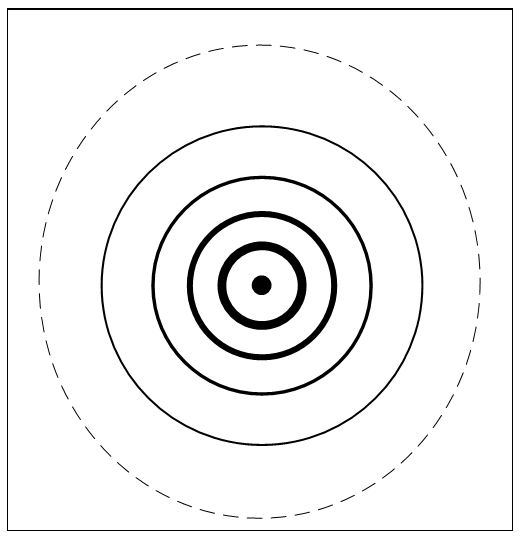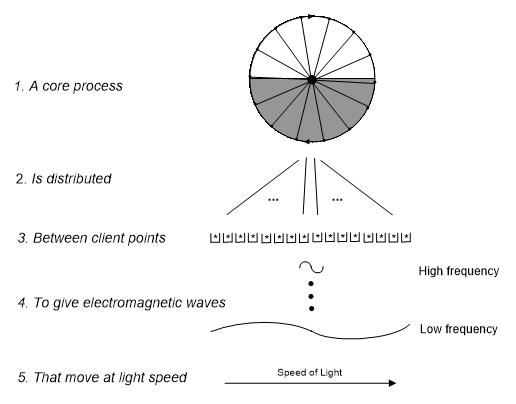Current physics calls a photon a massless particle that is also a wave, but can’t explain how it is so. It is said to be a particle because it hits a screen point, but how it got to that point is an assumption tacked onto the facts. According to quantum theory, a photon travels as a wave that collapses to a point at the screen, and its critics couldn’t fault this logic because it has no fault. The evidence, as usual, supports quantum theory but the standard model of physics still calls a photon an elementary particle.
Quantum theory describes a photon as a wave that spreads until it restarts at a point, like a particle, and that is why it works. In this model, it is a cloud of instances that can travel through two slits at once, but which one then is the photon? The question betrays our bias, that a photon is a particle, but according to quantum theory, it isn’t. To say a photon has wave function assumes a thing with wave properties, which isn’t possible. It follows that rather than having a wave function, the photon is the wave function, or more exactly, what generates it.
What a photon is depends on how the evidence is interpreted. In physical terms, a particle seen at a point must have always been so, but a process that restarts at a point needn’t remain so. It can just spread again, which a particle can’t do. It follows that a photon is never a particle, even when it hits a screen, as one event doesn’t make a particle. Based on quantum theory, the particle seen is a physical event caused by many quantum events, but events don’t abide because it isn’t in their nature to do so.
What then continues when a photon restarts? It isn’t its physical or quantum states but the process behind them. Quantum waves never stop because they rise again from the ashes of quantum collapse, like the phoenix. If all the matter we see, as the next chapter suggests, came from light, then it is immortal in our terms. That light never dies and space always abides was Act 1 of the drama of our universe, so if all the world’s a stage (Note 1), classical mechanics describes the stage but quantum mechanics describes the backstage events that make it happen, which is why they never die.
Note 1. As You Like It, Act II, Scene VII, Line 139


